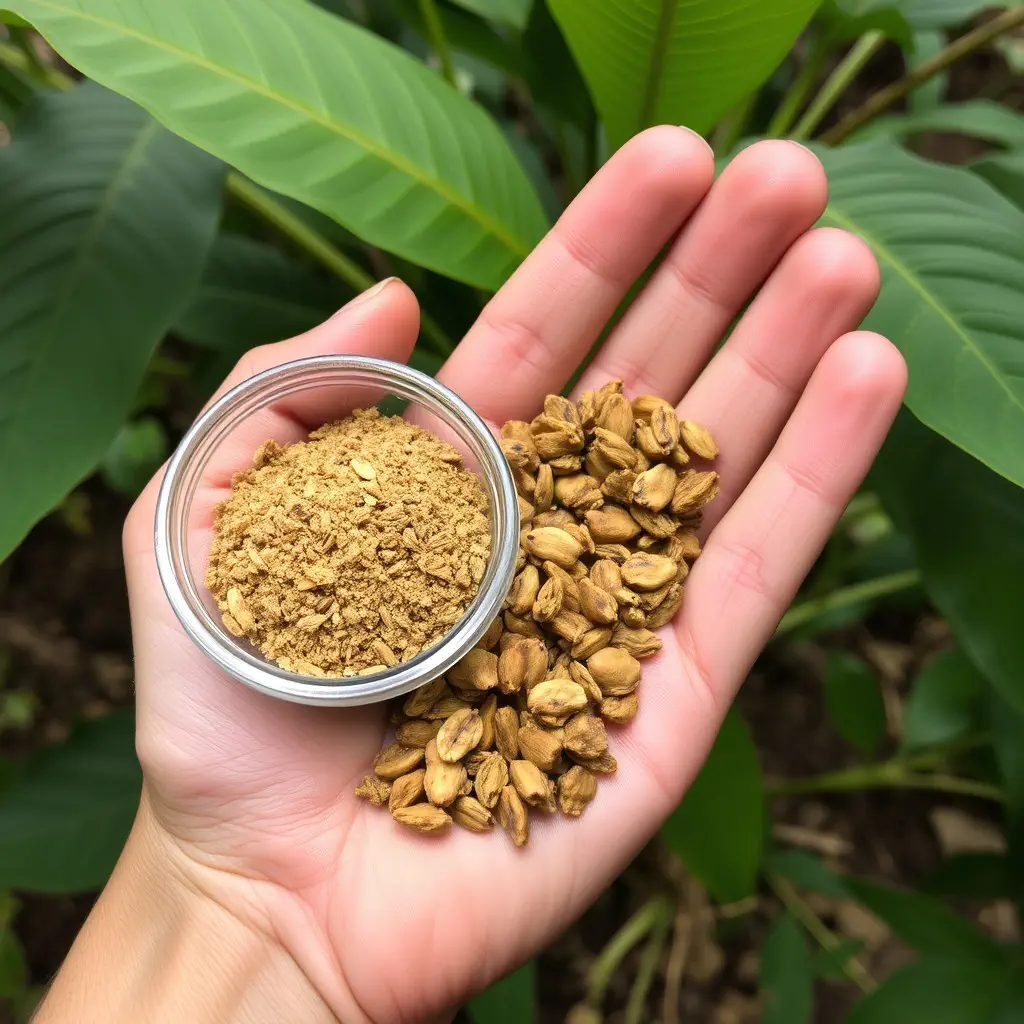The effects of kratom, a plant from Southeast Asia with compounds that interact with opioid receptors, can last between 5 to 9 hours, influenced by factors such as dosage and individual metabolism. Its prolonged effects, primarily due to alkaloids like mitragynine and 7-hydroxymitragynine, make it a subject of interest in addiction treatment for managing withdrawal symptoms and cravings associated with opioid dependence. Research is ongoing to understand its pharmacokinetics and optimize dosing regimens to enhance therapeutic efficacy while minimizing adverse effects. The duration of kratom's effects is critical for safe and effective use, especially in the context of recovery from opioid addiction. Studies aim to refine guidelines for its administration, contributing to insights on alternative treatments. Users must be cautious due to regulatory scrutiny and the unpredictable nature of its effects based on individual physiology. Kratom should be used under medical supervision as part of a comprehensive treatment plan to ensure it is employed effectively in medication-assisted treatment for opioid use disorder, with a focus on maintaining abstinence from other substances. The understanding of how long the effects of kratom last is essential for informed decision-making and responsible usage within the scope of medical guidance and oversight.
explore the multifaceted role of Kratom in addiction treatment and recovery, delving into the enduring effects of this botanical substance and its potential benefits. This article sheds light on the duration of Kratom’s impact, assessing its place within the spectrum of recovery tools. We will examine Kratom’s mechanisms, its benefits, and the complexities surrounding its safety and regulation. A critical examination of best practices for integrating Kratom into addiction treatment plans is also provided, offering insights into how long the effects last and their implications for individuals seeking recovery.
- Unraveling the Duration of Kratom's Effects and Its Role in Addiction Treatment
- Kratom's Potential in Addiction Recovery: A Deep Dive into Its Benefits and Mechanisms
- Navigating the Complexities: Safety, Regulation, and Best Practices for Using Kratom in Addiction Treatment
Unraveling the Duration of Kratom's Effects and Its Role in Addiction Treatment

Kratom, a plant from Southeast Asia with leaves that contain compounds that can interact with opioid receptors in the brain, has garnered attention for its potential role in addiction treatment. The duration of kratom’s effects is a critical aspect to understand when considering its use in this context. Typically, the effects of kratom, which include pain relief and euphoria, can last from 5 to 9 hours, depending on various factors such as dosage, individual metabolism, and the specific strain used. The alkaloids mitragynine and 7-hydroxymitragynine are believed to be responsible for these effects, with their presence influencing the longevity of kratom’s action in the body. In addiction treatment, this extended duration can provide a sustained relief from withdrawal symptoms, which is crucial for individuals transitioning off more potent opioids. The gradual onset and long-lasting action of kratom may also reduce cravings and mitigate the discomfort associated with the cessation of substance use. As research continues to unravel the complex interplay between kratom’s pharmacokinetics and its therapeutic potential, it is clear that understanding how long the effects persist is essential for safe and effective integration into treatment protocols for addiction recovery. Ongoing studies aim to refine dosing guidelines and determine the optimal duration of use to maximize benefits while minimizing risks, contributing to the broader conversation on alternative treatments for opioid addiction.
Kratom's Potential in Addiction Recovery: A Deep Dive into Its Benefits and Mechanisms

Kratom, a plant originating from Southeast Asia, has garnered attention in the realm of addiction treatment and recovery due to its potential therapeutic effects. The alkaloids present in kratom leaves, primarily mitragynine and 7-hydroxymitragynine, interact with the body’s opioid receptors, offering both stimulant and sedative properties depending on the dosage. For individuals in recovery from substance use disorders, particularly those who have developed a physical dependence on opioids, kratom may provide relief from withdrawal symptoms, which can be a critical barrier to successful recovery. The effects of kratom are dose-dependent, with lower doses stimulating the nervous system and higher doses having a sedative effect. This bimodal action can be beneficial for managing cravings and mood disturbances that often accompany addiction. Furthermore, research suggests that kratom’s impact on the opioid receptors may last longer than traditional opioids, potentially reducing the frequency of use required for maintenance in recovery settings. However, it is crucial to approach the use of kratom with caution, as its efficacy and safety profiles are still under scrutiny by regulatory bodies and medical researchers. Users should be informed about the potential duration of its effects, which can vary based on individual physiology, dosage, and method of consumption, to ensure responsible use within a treatment plan that is supervised by healthcare professionals. Understanding how long the effects of kratom last is important for users to manage their medication-assisted treatment effectively and for maintaining abstinence from other substances of abuse.
Navigating the Complexities: Safety, Regulation, and Best Practices for Using Kratom in Addiction Treatment

Kratom, a plant originating from Southeast Asia, has garnered attention in the realm of addiction treatment due to its potential opioid-like effects. As individuals navigate the complexities of using kratom for recovery purposes, understanding its pharmacological impact and the duration of its effects is paramount. The effects of kratom can vary depending on dosage, frequency of use, and individual physiology, with reported sensations ranging from mild stimulation to sedation, often lasting between 5 to 8 hours. However, the long-term implications of kratom consumption require careful consideration. The substance’s interaction with opioid receptors in the brain can offer relief from withdrawal symptoms, making it a potential tool in mitigating the discomfort associated with addiction recovery.
Safety and regulation are critical when incorporating kratom into treatment plans. The FDA has issued warnings regarding the risks of kratom use, including potential side effects and the possibility of abuse and dependence. As such, medical professionals must be well-versed in the best practices for its administration. These include carefully monitoring patients’ responses, ensuring proper dosing, and maintaining open communication with healthcare providers to avoid adverse interactions with other medications. Additionally, ongoing research into kratom’s efficacy and long-term impact on the body is essential to inform safe and effective treatment protocols. Regulatory frameworks must be established to guarantee the purity and safety of kratom products, thereby protecting individuals seeking alternative paths to recovery from addiction.
Kratom’s role in addiction treatment and recovery is a multifaceted subject that merits careful consideration. The durations of its effects, which are pivotal to its therapeutic potential, have been thoroughly examined, shedding light on how long do the effects of kratom last and their relevance within recovery protocols. The benefits and mechanisms underlying Kratom’s use in addiction recovery present an encouraging frontier for those seeking alternative or complementary treatments. However, it is imperative to navigate this landscape with caution, taking into account the complexities surrounding safety, regulation, and best practices. As research continues to evolve, the integration of Kratom into treatment plans must be approached judiciously, ensuring a balanced view that prioritizes patient well-being and long-term recovery outcomes.






